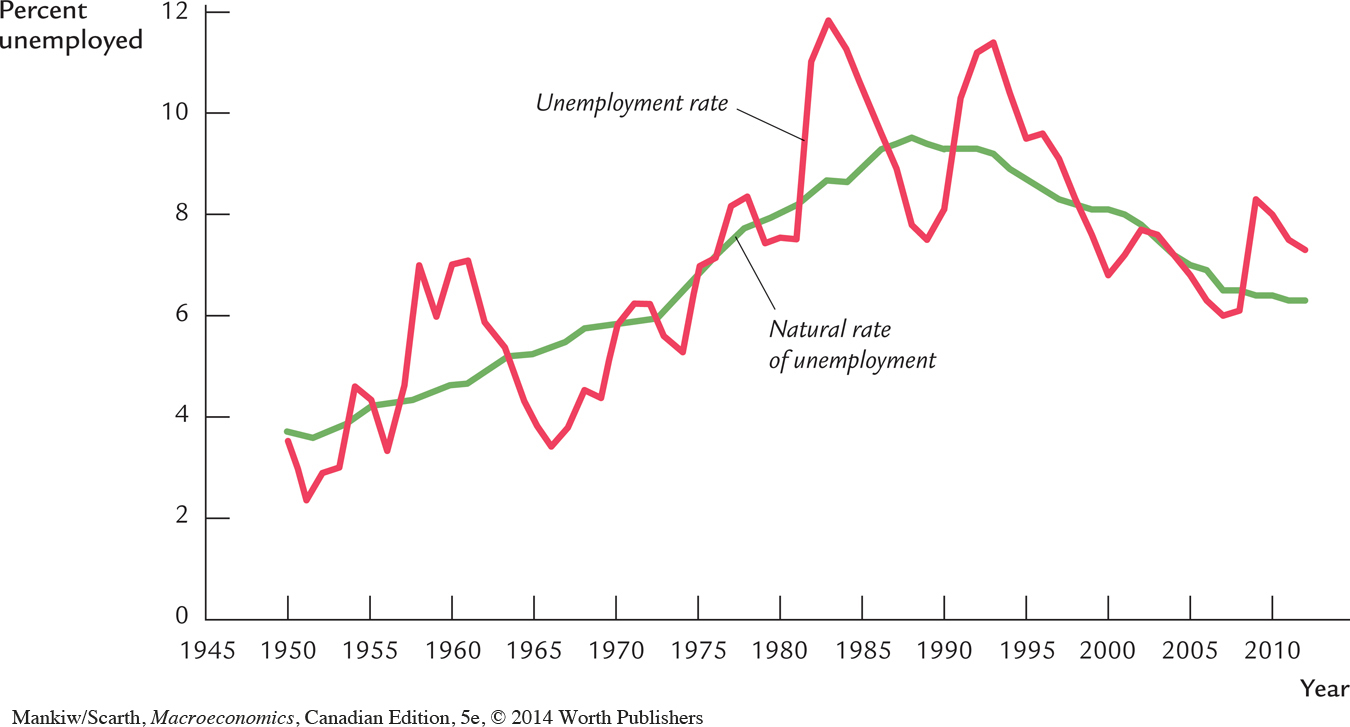175
Unemployment
A man willing to work, and unable to find work, is perhaps the saddest sight that fortune’s inequality exhibits under the sun.
— Thomas Carlyle
Unemployment is the macroeconomic problem that affects people most directly and severely. For most people, the loss of a job means a reduced living standard and psychological distress. It is no surprise that unemployment is a frequent topic of political debate and that politicians often claim that their proposed policies would help create jobs.
Economists study unemployment to identify its causes and to help improve the public policies that affect the unemployed. Some of these policies, such as job-training programs, assist people find employment. Others, such as employment insurance, alleviate some of the hardships that the unemployed face. Still other policies affect the prevalence of unemployment inadvertently. Laws mandating a high minimum wage, for instance, are widely thought to raise unemployment among the least skilled and experienced members of the labour force. By showing the effects of various policies, economists help policymakers evaluate their options.
Our discussions of the labour market so far have ignored unemployment. Our model of national income in Chapter 3 was built with the assumption that the economy was always at full employment. In reality, of course, not everyone in the labour force has a job all the time: all free-market economies experience some unemployment.
Figure 6-1 shows the rate of unemployment—the percentage of the labour force unemployed—in Canada since 1950. The figure shows that there is always some unemployment, although the amount fluctuates from year to year. In recent years in Canada about 1 out of every 15 people wanting a job does not have one.

In this chapter we begin our study of unemployment by discussing why there is always some unemployment and what determines its level. We do not study what determines the year-to-year fluctuations in the rate of unemployment until Part Four of this book, where we examine short-run economic fluctuations. Here we examine the determinants of the natural rate of unemployment—the average rate of unemployment around which the economy fluctuates. The natural rate is the rate of unemployment toward which the economy gravitates in the long run, given all the labour-market imperfections that impede workers from instantly finding jobs. Another term that is often used as a synonym for the natural unemployment rate is the level of “structural” and “frictional” unemployment. Unemployment rises above this long-run average level when the economy is in recession, and it falls below this level when the economy is overheated. These short-run variations in the unemployment rate are referred to as cyclical unemployment. At any point in time, overall, the actual unemployment rate is the sum of the natural rate and that period’s level of cyclical unemployment. Since we abstract from short-run cycles until Chapter 9, the present chapter focuses exclusively on structural and frictional unemployment.